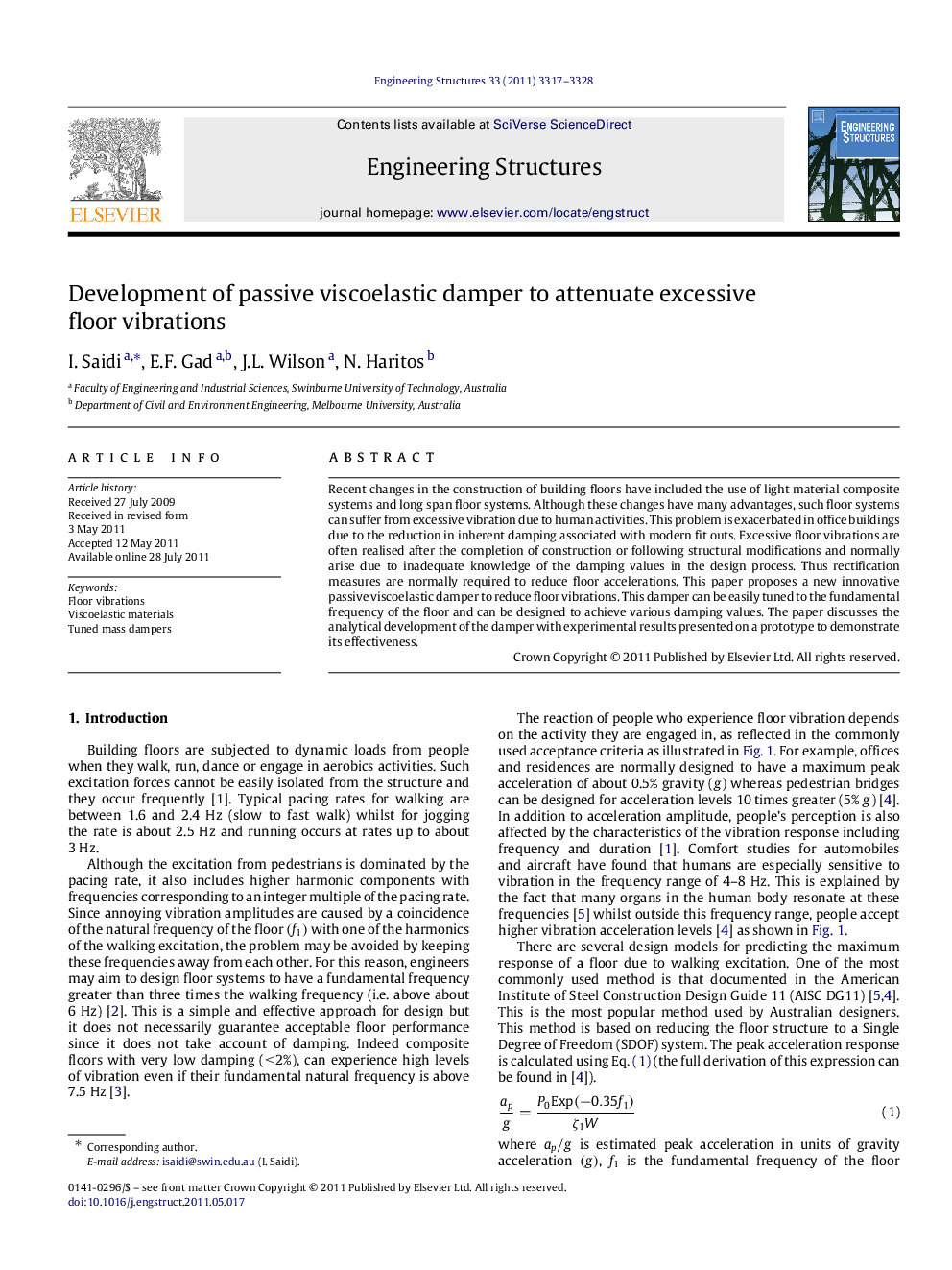| Article ID | Journal | Published Year | Pages | File Type |
|---|---|---|---|---|
| 268038 | Engineering Structures | 2011 | 12 Pages |
Recent changes in the construction of building floors have included the use of light material composite systems and long span floor systems. Although these changes have many advantages, such floor systems can suffer from excessive vibration due to human activities. This problem is exacerbated in office buildings due to the reduction in inherent damping associated with modern fit outs. Excessive floor vibrations are often realised after the completion of construction or following structural modifications and normally arise due to inadequate knowledge of the damping values in the design process. Thus rectification measures are normally required to reduce floor accelerations. This paper proposes a new innovative passive viscoelastic damper to reduce floor vibrations. This damper can be easily tuned to the fundamental frequency of the floor and can be designed to achieve various damping values. The paper discusses the analytical development of the damper with experimental results presented on a prototype to demonstrate its effectiveness.
► A new viscoelastic tuned mass damper was developed to reduce walking induced vibration in office floors. ► A simple numerical model was developed to determine the dynamic properties of the viscoelastic damper. ► Prototype dampers were built and their performance was successfully investigated on a number of test specimens.
